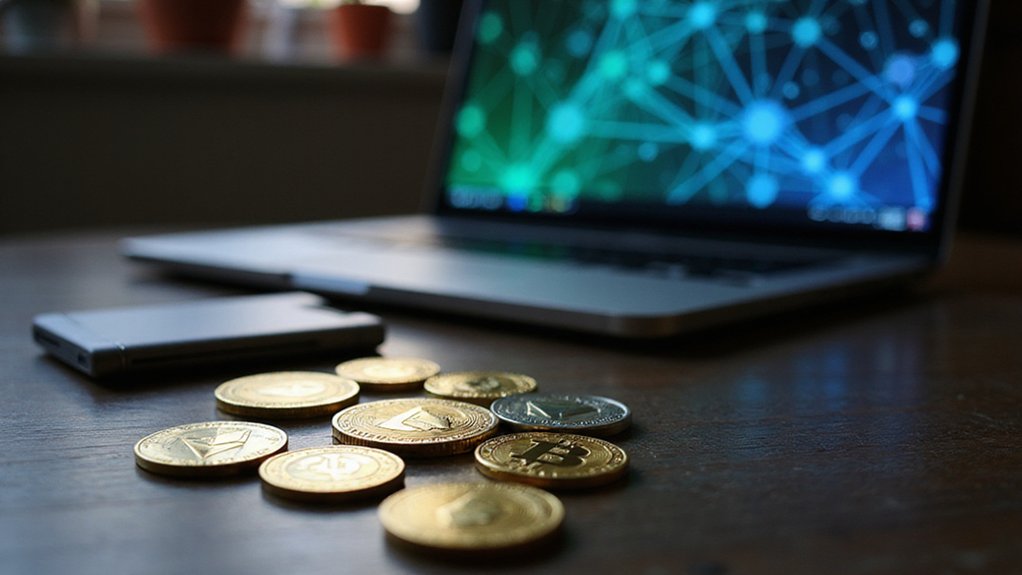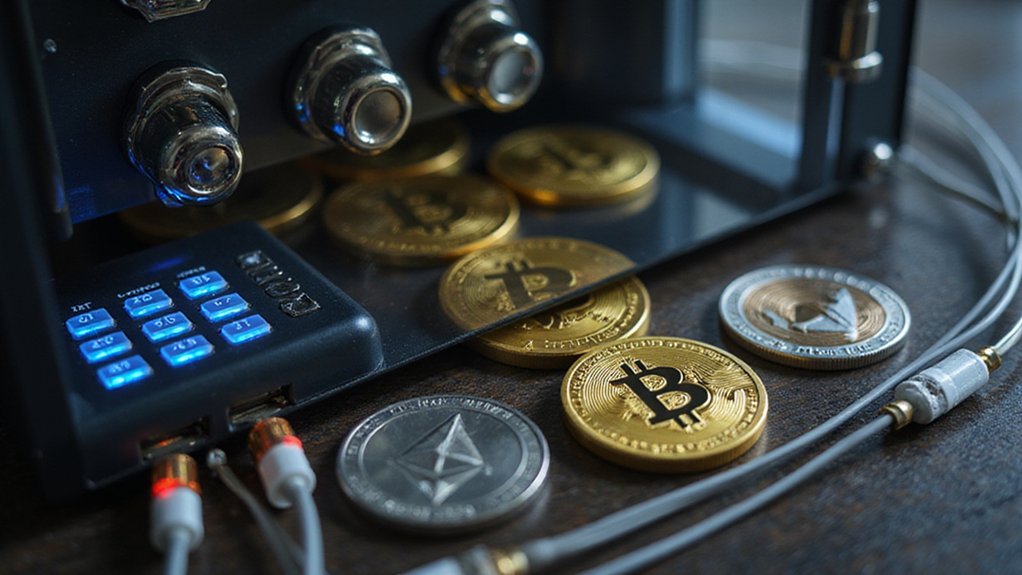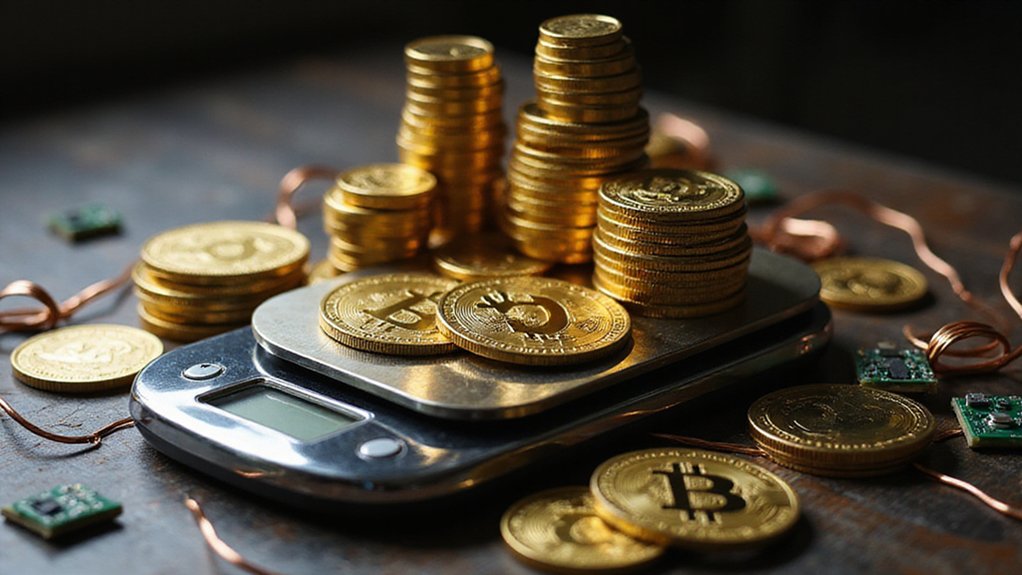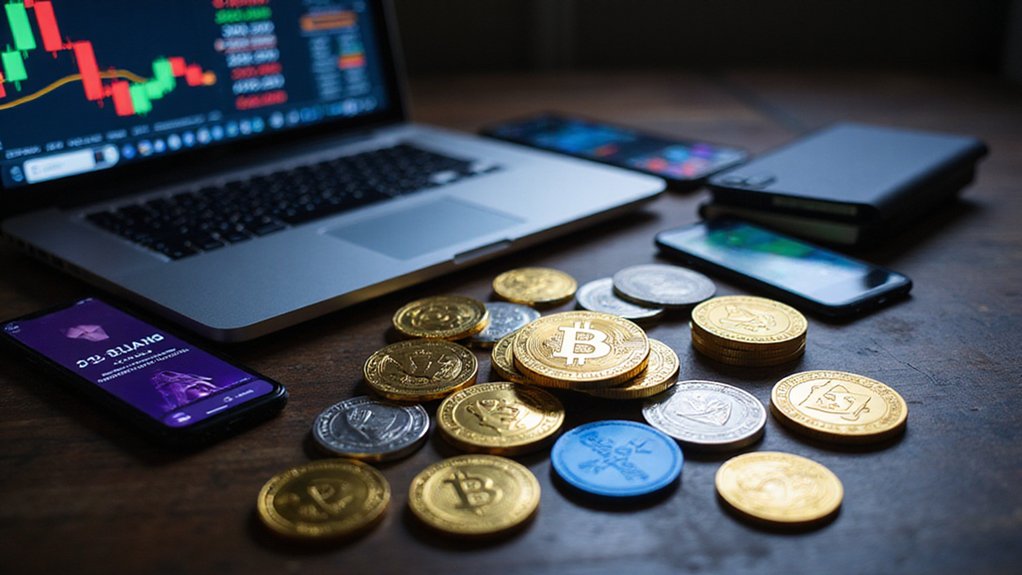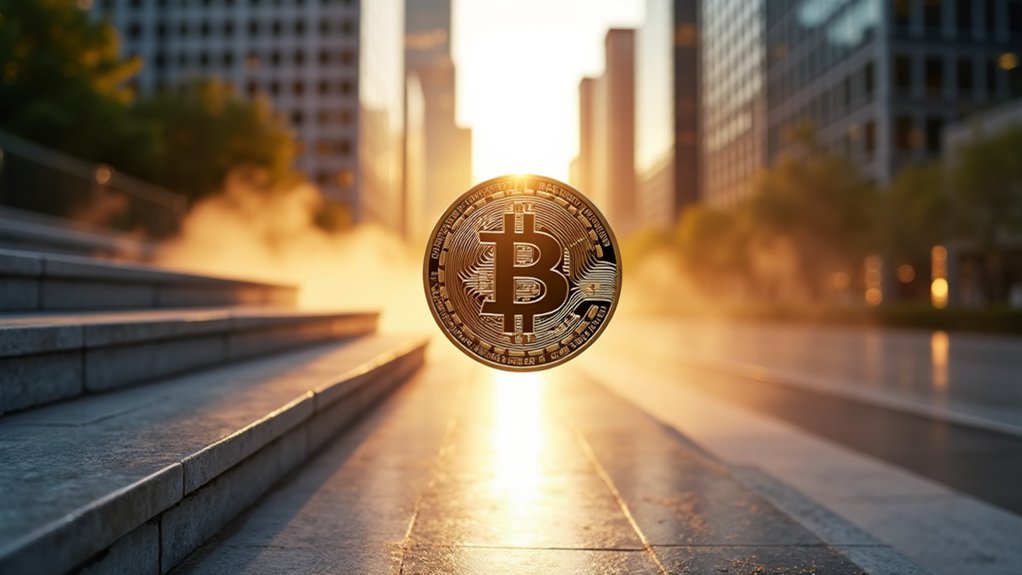Crypto assets are digital currencies secured by cryptography that operate on decentralized blockchain networks, replacing traditional banking authorities with mathematical algorithms. These assets bifurcate into coins (possessing independent blockchains like Bitcoin) and tokens (existing on established networks like Ethereum). While proponents herald them as digital gold offering fast global payments, investors face considerable volatility, regulatory uncertainty, and security vulnerabilities that can evaporate portfolios overnight. Understanding wallets, exchanges, and private key management becomes essential for traversing this mathematically-governed financial frontier.
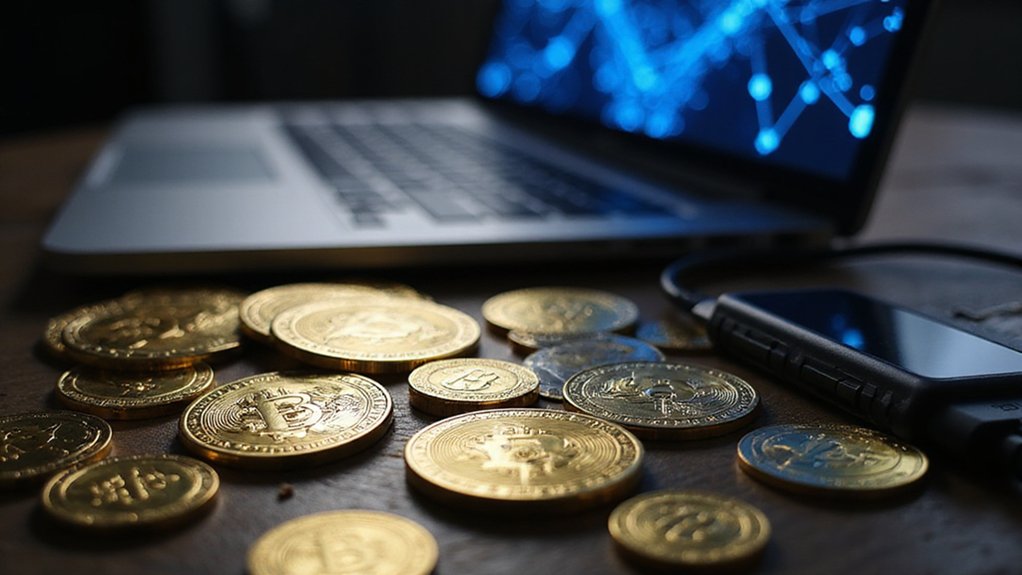
How does one navigate the labyrinthine world of digital currencies without falling prey to the countless pitfalls that have claimed fortunes faster than a poorly timed margin call?
The answer begins with understanding crypto assets—digital currencies protected by cryptography that operate on decentralized networks, primarily blockchain technology.
Crypto assets represent the mathematical evolution of money, where cryptographic principles replace central banking authorities in governing digital value transfer.
Unlike traditional currencies controlled by central banks, these assets exist in a domain where mathematics, rather than monetary policy, governs their creation and transfer.
Crypto assets bifurcate into two primary categories: coins and tokens.
Coins possess their own blockchain infrastructure (Bitcoin being the archetypal example), while tokens parasitically inhabit existing blockchains, often representing fractional ownership in underlying assets.
Ethereum, the second-most valuable cryptocurrency, exemplifies this distinction by serving both as a coin and as the foundation for countless tokens—a technological Swiss Army knife, if you will.
The ecosystem’s functionality relies on several critical components.
Wallets store these digital assets (though they technically store private keys, not the assets themselves—a distinction that has confused many a newcomer), while exchanges serve as the primary marketplaces for acquisition and disposal.
These platforms, ranging from user-friendly Coinbase to the more sophisticated Binance, facilitate conversion between fiat currencies and crypto assets, each extracting their pound of flesh through various fee structures.
Investment applications span the spectrum from mundane payments to speculative trading strategies that would make day traders blush.
Some investors treat Bitcoin as digital gold—a store of value hypothesis that remains hotly debated among economists.
Others engage in short-term trading, capitalizing on volatility that can make foreign exchange markets appear sedate by comparison.
Successful investing often requires careful consideration of whether to pursue long-term holding as a core strategy versus more frequent trading approaches.
This peer-to-peer system enables fast, easy, and inexpensive global payments for anyone with internet access.
Potential participants must acknowledge substantial risks inherent in this nascent asset class.
Market volatility can evaporate portfolios overnight, while regulatory uncertainty creates additional complexity.
Security vulnerabilities persist—exchanges have historically proven as secure as medieval castles against modern artillery.
The educational curve remains steep; understanding concepts like private key management and blockchain mechanics becomes essential rather than optional.
The private key serves as the critical authorization mechanism that proves ownership and enables transactions on the blockchain network.
Those considering entry should prioritize exchanges with robust security measures, competitive fee structures, and strong reputations—qualities that, ironically, often correlate inversely with promotional marketing budgets.
Frequently Asked Questions
How Do I Pay Taxes on Crypto Asset Gains and Losses?
Crypto asset gains require meticulous documentation of every transaction—purchase price, sale proceeds, and dates determine tax liability.
Short-term gains (assets held under one year) face ordinary income rates up to 37%, while long-term gains enjoy preferential rates of 0%, 15%, or 20%.
Taxpayers report using Form 8949 and Schedule D, calculating cost basis minus proceeds.
Losses offset gains, creating strategic harvesting opportunities, though the IRS scrutinizes aggressive positions with characteristic enthusiasm.
What Happens to My Crypto Assets if I Die?
When crypto holders die, their digital assets enter the same legal labyrinth as traditional property—yet with a distinctly modern twist.
Without proper estate planning, those meticulously accumulated Bitcoin holdings might become permanently inaccessible digital ghosts.
Executors need private keys (good luck explaining that to probate court), while beneficiaries face the delightful challenge of inheritance taxes on assets whose values fluctuate wildly between death and distribution.
Can I Use Crypto Assets to Buy Everyday Items Like Groceries?
While crypto enthusiasts can technically purchase groceries with digital assets, the reality proves less straightforward.
Most retailers eschew direct crypto payments, forcing users toward conversion cards (Crypto.com, Binance) that transform volatile tokens into stable fiat at checkout.
The irony? After evangelizing decentralized currency, one still relies on traditional payment rails.
Though 28% of Americans own crypto, everyday grocery transactions remain largely theoretical—a proof of adoption’s persistent friction between aspiration and practicality.
How Do I Recover Crypto Assets if I Lose My Wallet Password?
Recovery depends entirely on preparation—those who backed up seed phrases or private keys can restore wallets effortlessly, while others face professional recovery services with uncertain outcomes.
Without these recovery credentials, one basically relies on brute-force decryption specialists (charging fees based on wallet value) who may succeed or fail spectacularly.
The irony remains stark: decentralized finance offers no customer service hotline for forgotten passwords.
Are Crypto Assets Legal in My Country or State?
Cryptocurrency legality resembles a patchwork quilt sewn by committees—varying dramatically by jurisdiction and evolving faster than regulatory frameworks can accommodate.
Most developed nations permit trading and holding (though not necessarily as legal tender), while imposing AML/KYC requirements that would make traditional bankers blush.
Given the previously discussed wallet password predicament, one might ironically find their assets legally permissible yet practically inaccessible—a distinctly modern financial paradox.
